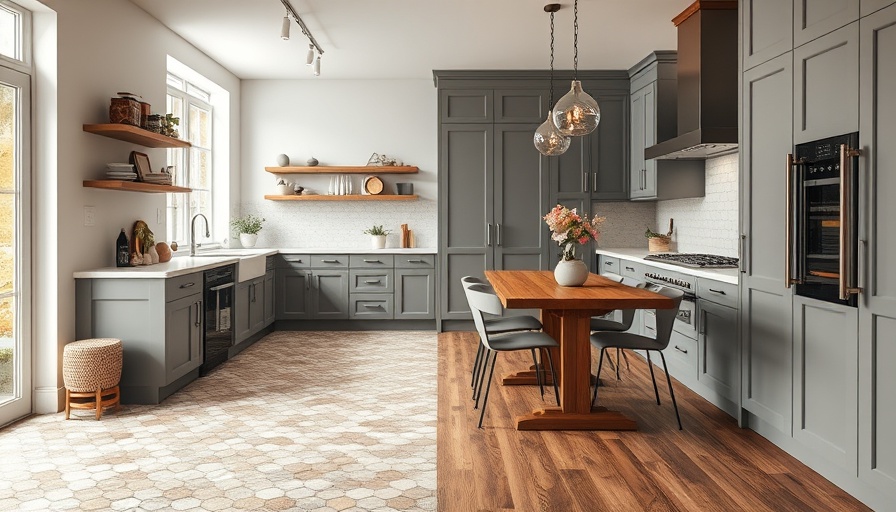
The Rise of Home Wellness Solutions for Seniors
Home is the embodiment of comfort, and for seniors, it is not just a physical space but a sanctuary that represents independence and familiarity. As the elderly population soars—expected to double by 2060—the demand for tailored home wellness strategies has never been more pressing. Shockingly, approximately 77% of older adults express a clear desire to age in place, favoring the warmth of their homes over sterile institutional settings. This is not just a fleeting trend; it’s a shift towards ensuring emotional stability and a quality of life where individuals can thrive on their own terms.
Assessing Individual Needs for Effective Home Care
One size does not fit all in the realm of elderly care. The critical first step in crafting any home care plan is thorough assessment. Utilizing clear frameworks like Activities of Daily Living (ADLs) and Instrumental Activities of Daily Living (IADLs) sets essential baselines to uncover mobility levels, cognitive functions, and personal preferences. Yet, behind every metric lies a human being. Engaging with seniors and their families through personal interviews reveals invaluable insights that standard checklists simply can't capture. Understanding individual routines can make all the difference in providing quality care.
Core Components of Effective Coastal Home Care
Amid the buzzwords of modern home care, it’s vital to focus on foundational elements. Essential services such as personal hygiene assistance, medication management, and meal preparation form the backbone of effective care. While offering high-tech solutions may seem appealing, core functions trump flashy amenities. Simple changes like installing grab bars and anti-slip flooring can drastically improve safety and independence at home. Moreover, consistency is crucial; caregivers should aim for familiar schedules and interactions, cultivating trust—the bedrock of any successful caregiving relationship.
Customizing Home Care Plans: Beyond Cookie-Cutter Solutions
Every senior has unique needs shaped by their preferences and daily rhythms. Tailoring home care plans ensures that individuals are not boxed into standard routines that may not serve them well. Whether alarming signs of dementia require stimulating activities or a simple preference for an early morning routine, a flexible approach adapts to each client’s lifestyle. Personalized strategies foster a supportive environment where seniors can not only survive but thrive.
The Search for Trusted Caregivers
Selecting the right home care provider requires a careful and deliberate process. Start by evaluating credentials; state licensing and training certifications signal professionalism. However, qualifications alone don’t guarantee the right fit. It’s equally important to establish a personal connection through meet-and-greet sessions and trial visits. Real-world feedback from families and unfiltered online reviews offer insights into the caregiving experience that can aid in making an informed decision.
Integrating Smart Technology into Home Care
As we delve into the future of senior care, the role of technology cannot be overstated. Telehealth tools, remote health monitoring, and medication management apps are redefining traditional care paradigms. However, technology should enhance rather than replace human interaction. The key lies in opting for user-friendly devices that are simple and intuitive, fostering an environment that prioritizes comfort over complexity.
Engagement: The Heart of Home Care Programs
Stimulation is not merely beneficial; it is essential for seniors’ mental and physical health. Incorporating light gardening, chair exercises, memory games, and even scheduled video chats with friends and family can keep seniors engaged meaningfully. Caregivers are tasked with tailoring these activities to cater to individual interests while ensuring safety—that is where the magic happens.
The Evolution of Home Care Strategies
As needs change over time, so too should the strategies employed in home care. An adaptable approach allows caregivers to adjust to evolving preferences, ensuring continuous engagement and comfort for seniors. This evolution should be a collaborative effort, involving not just healthcare providers but also family members and the seniors themselves in an ongoing dialogue about care strategies.
The conversation on home wellness for seniors is just beginning. As we delve deeper into the nuances of in-home care, it’s clear that a personalized, adaptable strategy will empower our loved ones to flourish in their own homes. By fostering a culture of trust and engagement and prioritizing the human connection, we can help transform the golden years into a time of dignity, comfort, and joy. Let’s keep the discussion going—what are your thoughts on home wellness solutions and strategies? Share them with us!
 Add Row
Add Row  Add
Add 




Write A Comment